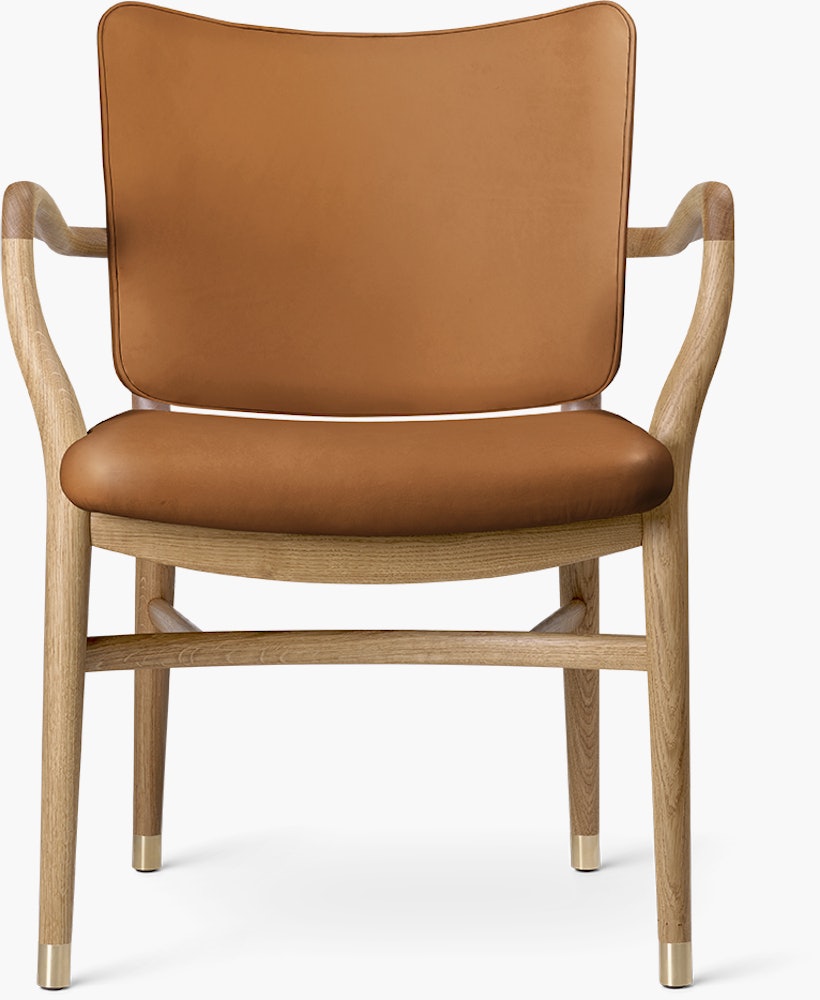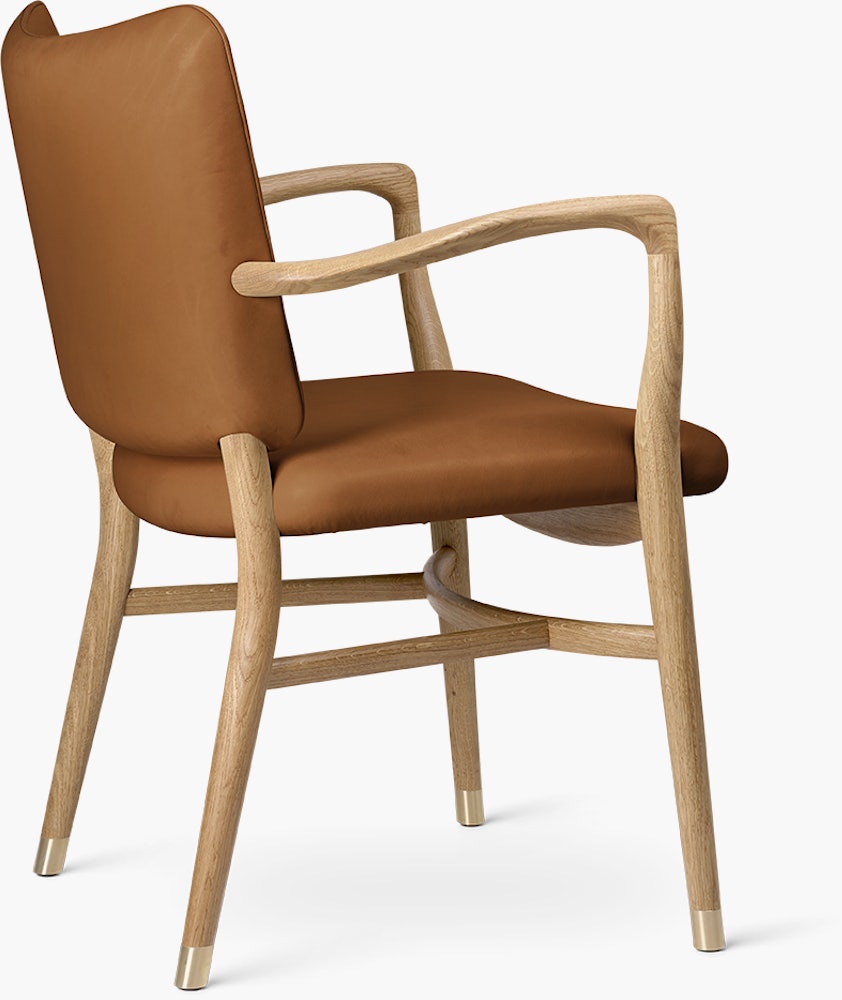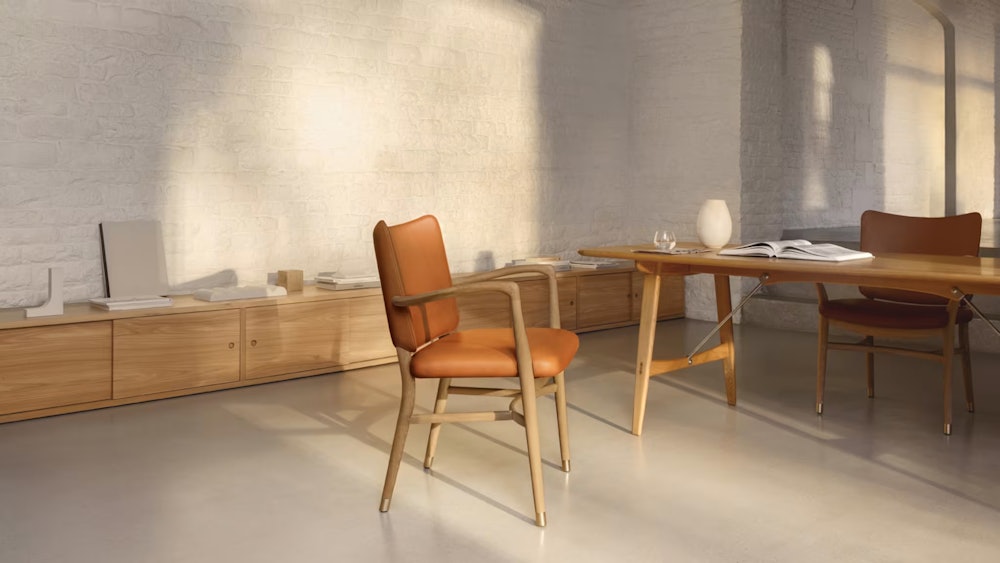4.1 out of 5 Customer Rating
Item No.
100475650
4.1 out of 5 Customer Rating
Item No.
100475650
Mahogany
Oak
Available to ship in:
- Distinctive midcentury design by Danish pioneer Vilhelm Lauritzen.
- Made in Denmark by expert craftspeople.
- Made from solid wood, leather, and brass.
- 34½" H 27¼" W 24" D
Shipping Options
- In-Home Delivery
Return Options
Not satisfied with your purchase? We'll work with you to make it right. Contact us within three (3) days of your order’s delivery. Learn more.
DWR honors a one (1) year warranty on all products. Brand-specific warranties may extend to longer periods.
Designed by Vilhelm Lauritzen for Carl Hansen & Søn
Manufacturer SKU:
Details
Inspired by the magnificent wings of the monarch butterfly, Vilhelm Lauritzen’s once elusive Monarch Chair (1944) has been revived by Carl Hansen & Søn. Its double-curved solid wood armrests extend outward, like open wings. Its soft upholstery and carefully hand-polished frame create a poetic interplay between integrity of materials and organic form. Elegant brass-capped feet punctuate its curved form. Monarch reflects the impeccable craftsmanship and subtle detailing of Lauritzen’s original design, in materials designed to stand the test of time. Made in Denmark.
- Distinctive midcentury design by Danish pioneer Vilhelm Lauritzen.
- Made in Denmark by expert craftspeople.
- Made from solid wood, leather, and brass.
- Brand
- Carl Hansen & Søn
- General Dimensions
-
- 34½" H 27¼" W 24" D
- Product Weight
- 15.5 lbs
- Assembly
- Comes fully assembled
- Warranty
-
DWR honors a one (1) year warranty on all products. Brand-specific warranties may extend to longer periods.
Monarch Chair
- Height (in): 34½
- Width (in): 27¼
- Depth (in): 24
- Weight (lbs): 15.5
- Arm Height (in): 27⅝
- FSC™-certified solid oak or mahogany frame
- Foam-padded seat and back
- Leather upholstery
- Brass feet
Vilhelm Lauritzen
Vilhelm Lauritzen is credited with introducing modern architecture to Denmark in the 1930s when he designed the Daells Varehus department store in Copenhagen – furniture and lighting included. He saw architecture as “applied art for the people, never a privilege for the few,” and went on to design many notable buildings and their interiors, led by his functionalist approach and timeless aesthetic.
More on Vilhelm Lauritzen




